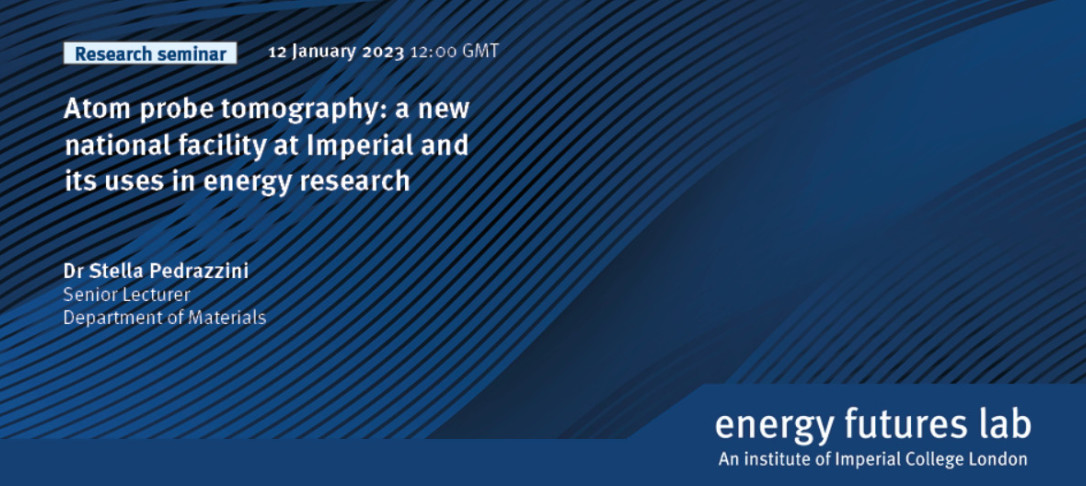
Atom probe tomography: a new national facility at Imperial and its uses in energy research
Atom probe tomography is a powerful technique that gives us a 3D atomic scale reconstruction of our samples. It has unparalleled spatial and chemical resolution, and can detect up to parts per billion (ppb) concentrations of elements at the quasi-atomic scale. Historically, its potential has been widely exploited in (among others) the seminconductor industry, but more recently applications in other industries are becoming increasingly common.
Since 2020, we have purchased an atom probe here at Imperial College as part of a new national facility called Cryo-EPS. The facility is EPSRC funded, and has an interconnecting cryo-plasma FIB, TEM, atom probe and glove box. The facility is fully commissioned and working now. In my talk, I will give an overview of what atom probe tomography does, how it works and how to access this new facility, with a special emphasis on energy-related research and examples from my own research group. My own group works in particular on metallic corrosion, applied to nuclear reactors, jet engines, industrial gas turbines for power generation and pipelines. One key part of it is the detection of hydrogen, which this facility will enable.
Biography:
Dr Stella Pedrazzini studied for an MEng in Materials Science at Trinity College, Oxford between 2006 -2010. Her research project focussed on nano-quasicrystalline Al-matrix composites for high temperature applications, a topic which she continued to work on during her DPhil, also at Oxford, between 2010-2014. For the following 3 years she remained at Oxford as a post-doc in the atom probe tomography (APT) group, splitting her time between 2 projects: (1) an atom probe study of radiation damage in perovskite superconductors for fusion applications and (2) environmental degradation in nickel superalloys exposed to corrosive and oxidising compounds. She moved to Cambridge in 2017 for a post-doc in the Rolls-Royce UTC, where she continued to work on oxidation and hot corrosion of nickel superalloys and tutored for Churchill College. She is a fellow of the Institute for Materials, Minerals and Mining (IoM3) (FIMMM) and IoM3 silver medal winner 2021. She sits on the IoM3 High Temperature Materials Committee, and the Materials Research Society (MRS) High Temperature Materials Committee.
She co-supervises a variety of industrially sponsored student projects in collaboration with Rolls-Royce plc, Shell, EdF Energy and other companies, as well as working on her own collaborative projects with the Royal Academy of Engineering and Engineering and Physical Sciences Research Council. She is currently involved in the set up of a new national facility for cryogenic microscopy at Imperial college, funded by EPSRC. In 2019 she received a 5-year EPSRC Early Career fellowship and an RAEng Associate Research Fellowship to investigate corrosion of nickel superalloys, which she is currently funded by.
About Energy Futures Lab
Energy Futures Lab is one of seven Global Institutes at Imperial College London. The institute was established to address global energy challenges by identifying and leading new opportunities to serve industry, government and society at large through high quality research, evidence and advocacy for positive change. The institute aims to promote energy innovation and advance systemic solutions for a sustainable energy future by bringing together the science, engineering and policy expertise at Imperial and fostering collaboration with a wide variety of external partners.